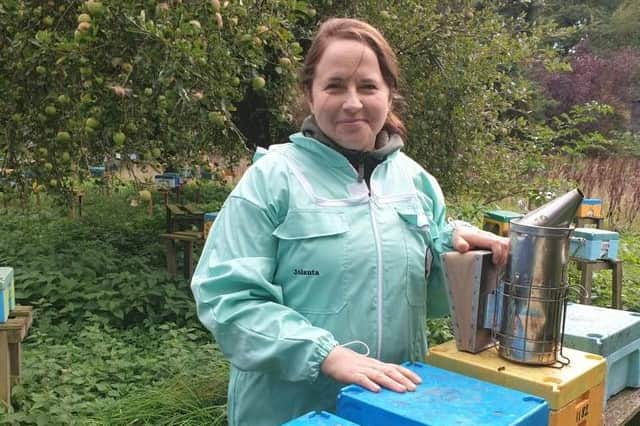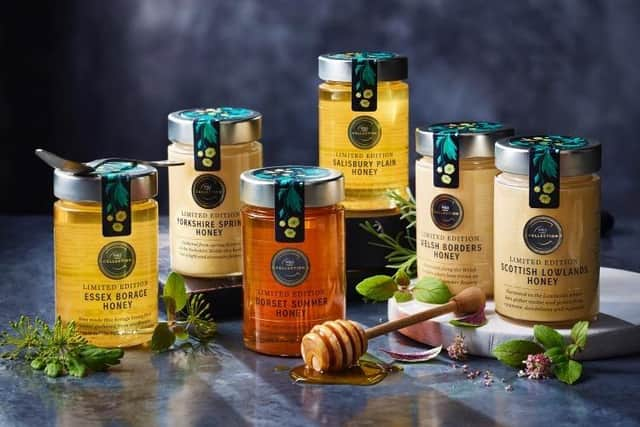Perthshire queen bee breeder helps create Marks & Spencer honey
This article contains affiliate links. We may earn a small commission on items purchased through this article, but that does not affect our editorial judgement.


Not everyone gets to be a lady-in-waiting.
That’s the job of Jolanta Modliszewska, though it’s not human royalty she’s tending. Instead, she’s a queen-bee breeder, based at Denrosa Apiaries, which has over 5000 hives in the UK.
At their Coupar Angus HQ, they’ve just created an M&S Limited-Edition Scottish Lowlands Honey. It’s available exclusively in Scotland and has been produced from colonies headed by queens bred in this country. Modliszewska, who’s worked at Denrosa for 17 years, tells us about her unusual job.


How did you get into beekeeping?
Advertisement
Hide AdAdvertisement
Hide AdI’m originally from southern Poland and grew up in a rural area, caring for plants and animals. I got into beekeeping quite by chance. I arrived in the UK on the promise of work which did not fully materialise but a friend of mine was already working at Denrosa. They had a vacancy and asked if I wanted it. I was there first thing the next morning and I’ve never left.
How do you breed queens and establish a colony?
We select the best colonies by scoring them on a variety of criteria including honey production, bee and brood health, and various behaviour traits that make management simpler, such as low swarming and minimum aggression. We then take very young larvae from those and place them in specially prepared colonies where they are cared for and developed into queens. They’re placed into an incubator to complete their pupation, and, at the point of hatching, they are transferred into mini hives to fly and mate. Once this has been done and the queen starts to lay eggs, she is harvested and used to start a new colony.
A new colony is started in one of two ways. You can take some brood and bees from an existing colony, but not the queen, and take them to a place far from the parent hive. Once they are checked and definitely queen-less – a process that takes about a week – we introduce the new queen into it. She is accepted into the hive and starts to lay eggs almost immediately so it quickly grows into a new full-strength colony. The alternative is to take bees out of other colonies and place them into a new hive with the new queen added.
What do you find most fascinating about bees?
Many aspects. I love seeing the final product of my work - delicious honey, and being gentle when working with them. I also like seeing them collect a huge variety of pollen. The type massively influences the taste of the product. My favourite job is collecting queens from the mating boxes and seeing the way the bees react to and care for her. It’s fascinating.
Can a colony fail?
Yes and for many reasons, including the queen not gelling with the wider hive. A failing colony just does not prosper, lacks morale and the brood won’t work cohesively. A good colony is vigorous, grows quickly and has perfect broods - and collects more honey of course, so that’s an indicator of a successful queen.
Did M&S approach Denrosa?
We have been part of their supply chain for some years. For the new Collection Honeys, we were approached by M&S and we were very receptive to their vision of developing regional honeys which provide a unique taste, quality and a new offering for shoppers. M&S works with us to produce honey on Select Farms they have existing partnerships with, so we can bottle it individually and trace it back to a specific apiary, and also the new Collection Scottish Lowlands Honey, which is still region-specific but covers a bigger selection of hives. They understand the quality and variety of forage the bees have access to, and therefore the flavours that can be produced.
Why the Scottish Lowlands?
For a taste that could not be produced anywhere else in the UK. It’s a snapshot of the year that can never be re-created, as the weather and the places the bees forage are always varying slightly year to year – you could say it’s a 2022 time capsule. The Scottish Lowlands honey is produced mainly on agricultural land throughout the lowland of Scotland, our main range being in Tayside, Fife and Lothians. The main flora involved here are rapeseed, clover, lime, sycamore and raspberry, combining to create the product’s taste. It’s pale in colour with a fruity/floral note and goes well with most food pairings both savoury and sweet. If you have a pot with lots of lime in it, it can have a slightly minty tang. My favourite is produced from sycamore. It’s usually quite dark and nutty in taste, so it’s great with cheeses, salads and other savoury flavours.
Do you worry about the future for bees?
The main threat is loss of foraging due to intensive farming of non-nectar producing crops. The M&S farms however, take into consideration all pollinators, both wild and farmed, ensuring there is enough for both and that the honeybees are never intensively farmed. Major environmental concerns, such as global warming, will change the pattern of flora over the years and make management more difficult, so it is a challenge. Bees like warm weather, but prolonged heatwaves and droughts can be very damaging, so we have to monitor this closely.
How many times have you been stung?
Advertisement
Hide AdAdvertisement
Hide AdQuite often. However, the better the bee breeding gets the less it happens, and it is often your own fault. However, the bees do seem to react well to me, and my colleagues say that they seem noticeably calmer when I work with them.